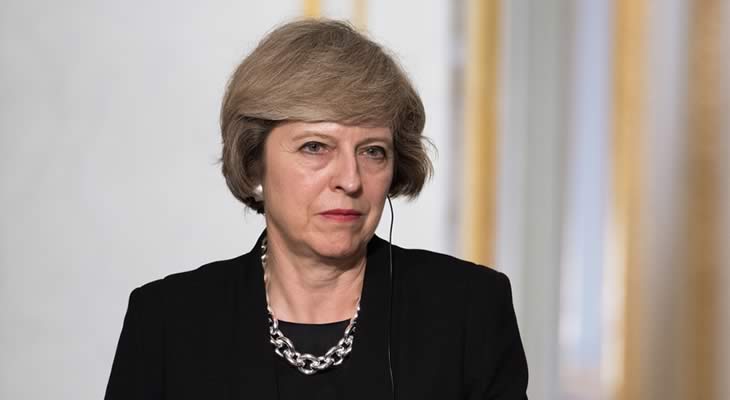Pound to Australian Dollar Exchange Rate Slumps on Fresh Brexit Uncertainties
While investors are becoming more hopeful that the UK and EU will reach a Brexit deal, UK political concerns are worsening again and this knocked the Pound to Australian Dollar (GBP/AUD) exchange rate lower when markets opened on Monday.
Due to higher demand for risky trade-correlated currencies, GBP/AUD continued its tumble last week. GBP/AUD opened the week at the level of 1.8015 and closed around half a cent lower, at 1.7949.
Despite avoiding the lows seen at the end of October, Sterling (GBP) weakness on Monday caused GBP/AUD to slump to a fresh 2-month-low of 1.7866.
Last week, the Pound to Australian Dollar exchange rate avoided further weakness thanks to speculation that the UK and EU were closing in on a final Brexit deal.
However, this week headlines have been hit by concerns that even if a deal were to pass it could still face major obstacles in UK parliament that may even see the deal fail.
Pound (GBP) Exchange Rates Slump on Reports of Domestic Opposition to UK Brexit Deal
UK Prime Minister Theresa May has struggled to reach agreements over her planned Brexit outline, the so-called ‘Chequers plan’, not just with EU negotiators but also domestically.
With November almost halfway over and time to reach an agreement running low, UK and EU negotiations may be edging towards an end – but fresh reports indicated that domestic opposition was growing.
Reportedly, Prime Minister May’s Brexit deal has faced concerns from within her own government Cabinet ever since the deal was first revealed in July.
Sources told the BBC that ministers were unconfident the deal would be able to pass through UK Parliament.
As UK Theresa May’s government is a minority government propped up an alliance with Northern Ireland’s DUP Party – an alliance that has been shaky – there are concerns that UK Parliament may block the Brexit plan from entering UK law.
If a Brexit plan fails to be passed, it could lead to the Brexit process taking place without a deal. Analysts predict this outcome could cause significant damage to Britain’s economy.
Australian Dollar Exchange Rate Gains Limited as Risk-Sentiment Lightens
Much of last week’s Australian Dollar (AUD) gains were due to higher market demand for riskier commodity-correlated currencies, due to the results of US Mid-Term Elections as well as some strong trade data from China.
However, the latest risk rally was once again limited. Demand for the safe US Dollar (USD) was resilient due to strong US data, and investors became more hesitant to take risks again following a hawkish tone from the Federal Reserve.
While the Reserve Bank of Australia (RBA) upgraded its Australian growth forecasts during its statement on monetary policy last week, the bank continued to indicate that it would not be tightening Australian monetary policy any time soon.
This contrasted with the Federal Reserve, which maintained a hawkish stance for US monetary policy. The bank signalled a rate hike for December, as well as at least two rate hikes in 2019.
The perceived deepening in monetary policy divergence between the Federal Reserve and other major economies weighed on risk-sentiment, limiting the Australian Dollar’s strength on Monday.
Pound to Australian Dollar (GBP/AUD) Exchange Rate Awaits Brexit Developments
Despite the Australian Dollar’s own weakness, the Pound’s losses have been much more influential. Brexit news is likely to be a driving force in Pound pairings in the coming weeks, and GBP/AUD could keep falling unless investors are given reason to be optimistic.
Markets are becoming increasingly concerned that even if a UK-EU Brexit deal is successfully negotiated, it will face too much domestic opposition to enter UK law.
This could leave the UK government without enough time to forge a new deal, possibly leading to a worst-case scenario ‘no-deal Brexit’.
In this scenario, the Pound would see significant losses. Of course, signs that UK MPs will eventually support UK Prime Minister Theresa May’s Brexit plan could give the Pound a boost instead.
Of course, regardless of domestic concerns the confirmation of a UK-EU Brexit deal being reached would lead to a surge in Sterling demand too.
Ultimately, Brexit developments will dominate Pound movement this week, leaving the Australian Dollar to be the less influential of the two.
The ‘Aussie’ may still drive some GBP/AUD movement amid a notable shift in risk-sentiment, or if this week’s Australian job market stats surprise investors.
Upcoming UK job market and inflation data could also cause some movement in the Pound to Australian Dollar (GBP/AUD) exchange rate.


Comments are closed.